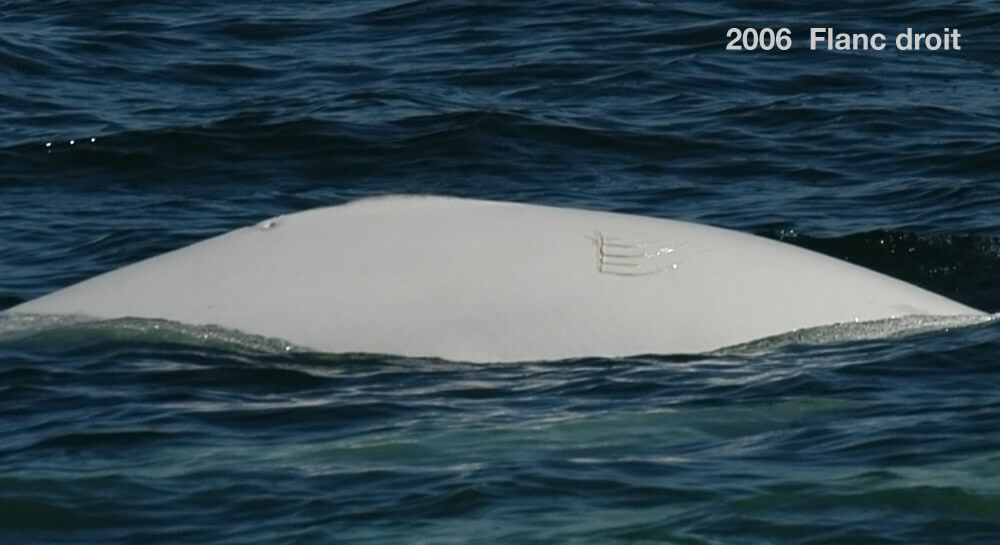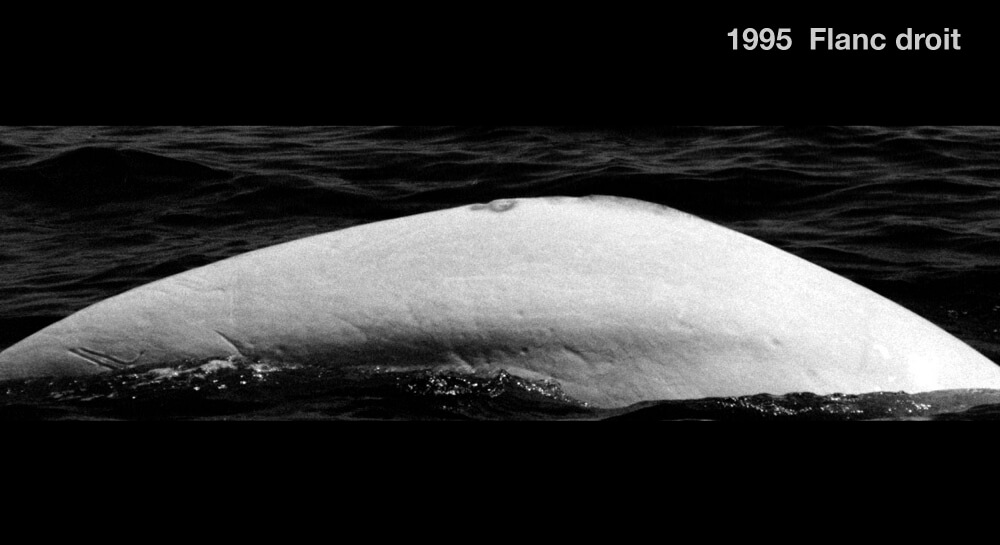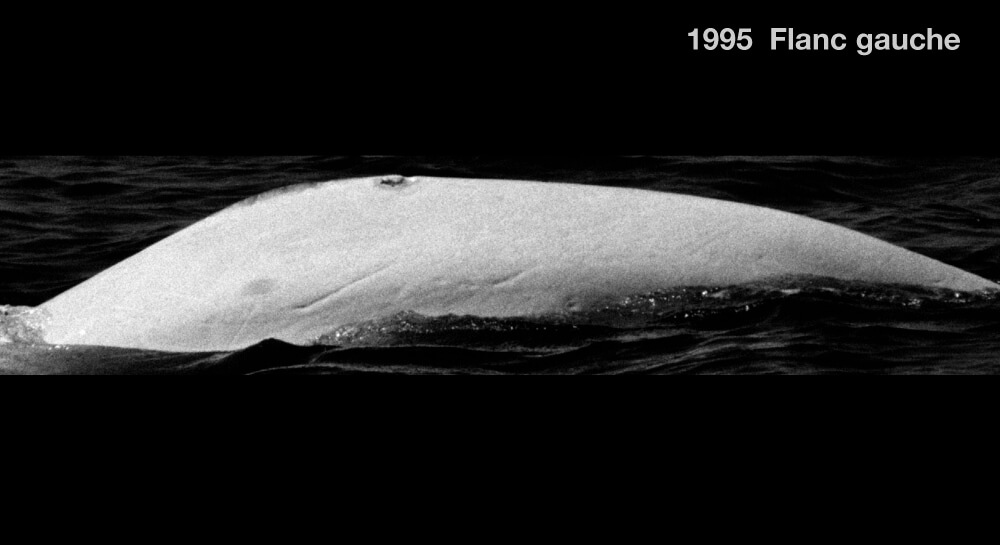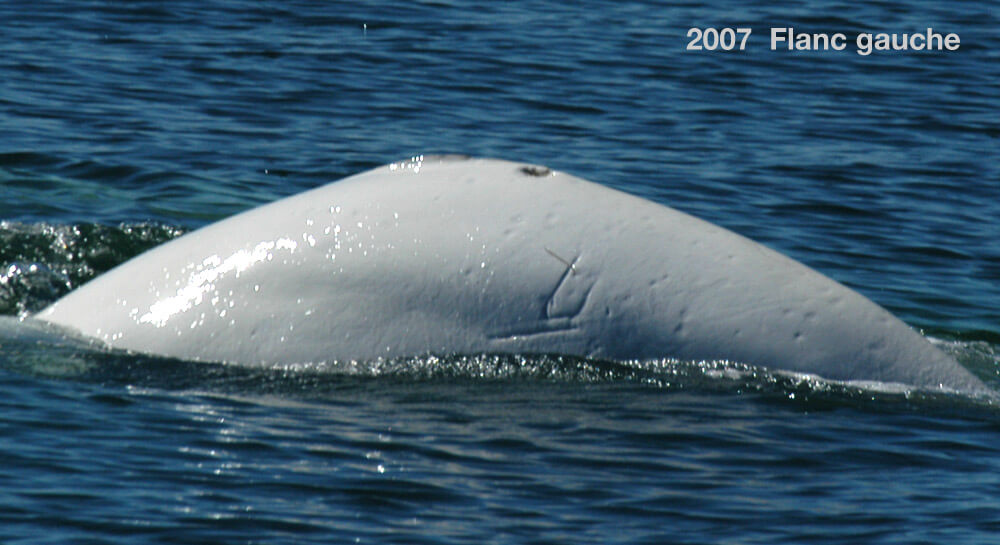DL0242
Beluga


-
ID number
DL0242
-
Sex
Presumed male
-
Year of birth
Circa 1981
-
Known Since
1992
Distinctive traits
DL0242 can be recognized by the unique shape of the scar at the end of his dorsal crest, which is visible from both sides. The crest itself contains several small details. He also bears a gray spot behind his head on the right side.
Life history
We first encountered DL0242 in 1992. He was still gray at the time, but of considerable size. He turned white around 1997. Belugas fade from gray to white in colour between the ages of 12 and 16. DL0242 would therefore have been born around 1981.
His large size and habits suggest that DL0242 is a male. Like other adult bulls of the population, he spends most of his time in herds composed essentially of males. Three networks of males are known: two of these navigate the Saguenay Fjord and the head of the Laurentian Channel, while the third one, the “Downstream Boys”, also uses the head of the Channel as well as the downriver portion of the Estuary, but avoids the Saguenay.
Within these male networks, adult bulls form stable groups of companions. These associations, which are established gradually, may play a role in belugas’ reproductive lives.
DL0242 and his most regular companions – Stanley, Moby Dick and DL0238 – have rarely been observed in the Saguenay River. They probably belong to the “Downstream Boys”.
How DL0242’s story unfolds will teach us volumes on the evolution of belugas’ social lives. By better understanding how belugas live, we will better be able to protect them.
Adopt DL0242
Adopting a beluga costs $5000 per year. Two approaches allow you to contribute in the way that suits you best : Adopt your beluga in your own name or as a group.
Whether you wish to adopt a beluga in your name or that of your business or launch a campaign for a joint adoption, contact our team by email or by phone at 418-235-4701. Our team will provide you with all the tools to carry out your campaign online and promote it in your networks.
Observations history in the Estuary
Years in which the animal was not observed Years in which the animal was observed
Latest news
We’re off the coast of Les Bergeronnes. DL0242 is in a massive herd numbering some 150 belugas. The majority are white adults, clustered in groups of 5 to 8 individuals plus a few solitary animals.
These large gatherings are short-lived in nature, and consist essentially of males. They are often observed in the downriver sector of the beluga’s summer range, namely between Tadoussac and Les Escoumins. After a few hours, these expansive herds separate into smaller groups.





